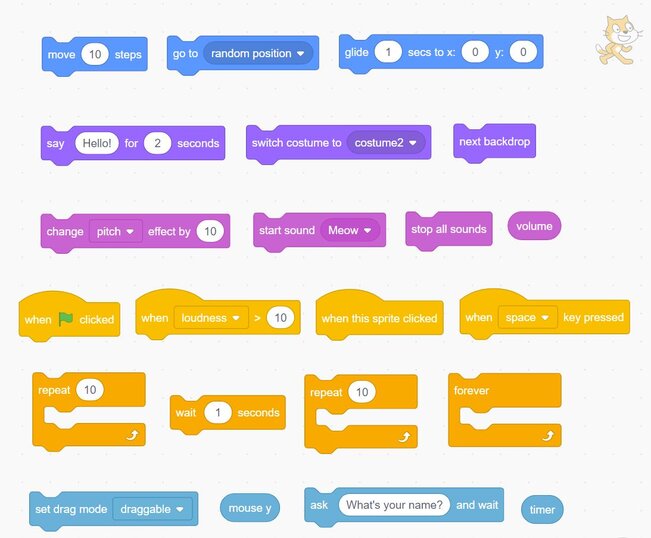Kodeclik Blog
Scratch Coding: Block based programming
Scratch is a block based programming language developed at the Lifelong Kidergarten at MIT’s Media lab. It is a wonderful tool that can be used to introduce coding to kids at age 8-12.
Scratch is often referred to as a block based programming language since all the code is built using blocks rather than writing text. In other words, Scratch programs consist of blocks that are connected together to form a program. Each block is used to perform a specific action. A block is the equivalent of commands in traditional text based programming languages.
Scratch Coding Blocks

Scratch blocks are classified into different types based on their function.
The Motion blocks create movement. The Looks blocks control appearance. The Sound blocks produce sounds. The Sensing blocks detect user input. The Control blocks add logic to the programs. The Operator blocks perform calculations. The Events blocks initiate or invoke programs based on specific events. The Variables blocks save information within the programs.
Behind the Scratch block
The Scratch 3.0 blocks are made using the Blockly libraries. The inner workings of the blocks are programmed using JavaScript.
Ready to learn Scratch?
Scratch coding: Scratch Coding 101 – Programming with Scratch 3.0.
Drawing with Scratch: Scratch Coding 102 – Drawing with Scratch 3.0.
Creating fun animations: Scratch Coding 103 – Animation with Scratch 3.0.
Advanced animation: Scratch Coding 104 – Advanced Animation with Scratch 3.0.